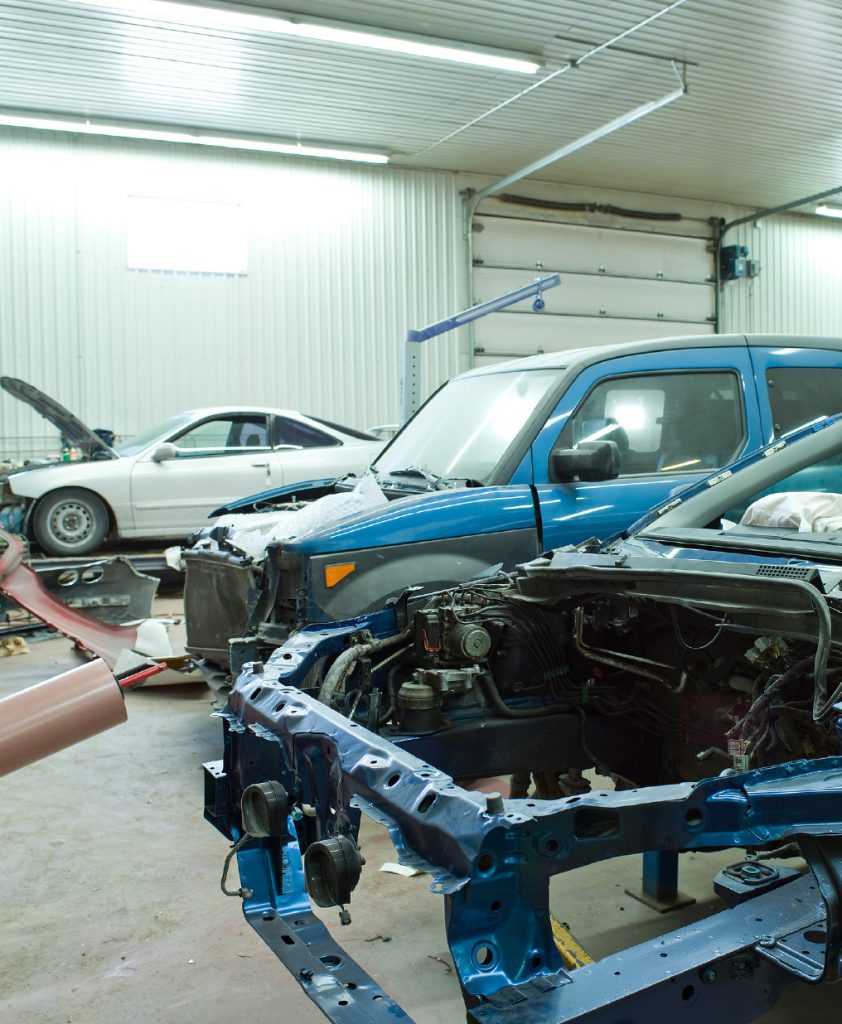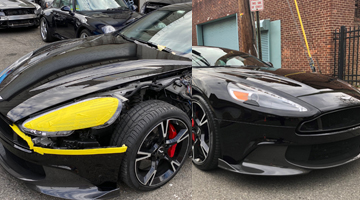BODY SHOPS ARE DISAPPEARING
BY JOHN A. WALCZUK
Over the last decade, the number of Independent Auto Body Shops has declined. According to some studies, this trend will continue over the next decade. There are several reasons for this trend, not the least of which is the insurance carriers continued desire to expand DRP (Direct Repair Program) shops or the mass buying of shops by some large organizations.

Contributing to this trend is the so phisticated technology that might be required to repair newer vehicles and the impact of data base systems. Remember data base systems are used by the insurance carriers to determine market valuations. Data base system us age is a resource of the insurance carrier, paid for by the carrier, and individually modified to meet each of their businesses objectives
One alarming reason for the reduction in the number of shops is the inaccurate use of the database systems used by the insurance companies. What usually determines a total loss is the comparison of a vehicles’ market value versus the cost to repair. A misstated condition adjustment or failure to include all vehicle options can result in a lower comparable vehicle and an incorrect valuation being provided by the database company. With most states using a percentage conversion of vehicle value to repair cost, it is easy to understand how the lower vehicle value contributes to the total loss unit increase or corresponding decrease in repairable vehicles. The result is simple, are duction in the number of repairable vehicles that directly correlates to the reduction in the auto body shop business.
Contributing to the decline in auto body shops could also be a method often used in preparing a repair estimate. For example, a repair estimate for older vehicles will often be prepared using only new replacement components. This approach can and does enable the insurance carrier to more easily justify a total loss determination. The increased parts cost to repair in this manner is then measured against the supposed market value as previously stated. As each state has a published ratio of vehicle value to repair cost in determining a total loss, it is easy to imagine how this approach adds to the total loss vehicle count.
Contrary to this approach might be a newer vehicle, where a repair estimate might be prepared stating used or non-original equipment manufacturer parts known as after-market parts (AMP) versus original equipment manufacturer(OEM). It is unclear why repair estimates for older vehicles versus newer, might be prepared in such a different manner. However, whether a vehicle is older and now deemed a total loss or newer and repaired with parts that are either reconditioned or non-OEM, the vehicle owner is the real loser. The only real winner is the insurance carrier.
The benefits to the carrier based on this approach can be seen on several fronts. With respect to the older vehicle, the value is likely to be less than the newer vehicle, hence the total loss settlement will be less. The carrier then sells the totaled vehicle to a salvage company reducing the total loss expense as the revenue from the totaled(salvage) vehicle results in cost savings for the carrier. Additionally,not repairing the vehicle eliminates the costs that would normally be incurred in the repair process. Had a body shop fixed the vehicle with no offsetting salvage income, the carrier would only see an increase in repair expense. This process not only results in fewer repaired vehicles at the body shop but less cost and a resulting increase in profits for the insurance carrier.
Now consider the newer vehicle being repaired with AMP or possibly reconditioned components. The carrier saves money by using non-OEM parts and or reconditioned components in the repair process. In most repair estimates these parts cost less than OEM components. It is often the experience of body shops that these non-OEM parts do not fit properly. However, they cost less and are what the carrier has provided for in their repair estimate. The impact on a vehicle’s value is obvious. Parts such as non-OEM can in many cases be viewed as inferior and reduce the residual value of the vehicle. The carrier again benefits by paying less in repair costs which helps to increase the profitability of the insurance carrier.
The impact on a vehicle using sub-standard parts such as described above was recently disclosed by Anderson Cooper in a CNN report that aired on February 11, 2015. While we cannot state that every vehicle repaired utilizes lesser quality parts, the impact on quality and safety was clearly presented. This report also let the unsuspecting vehicle owner see that vehicle repairs as dictated by the insurance carrier were financially driven. Quality and safety appear to be a distant second in the decision process.( The original report can be seen by following this link http://cnn.it/1EZTGPa.)
Every shop should consider the possible liability resulting from using lower quality or reconditioned components. As the repairer of a motor vehicle, it is the shop, not the carrier who is held responsible for an inferior repair or possible future liability. Demands by the carrier to use reconditioned components do not minimize a repair shops liability for safe quality repairs. While carriers might claim they will stand behind a repair and possible resultant liability, it is unclear what if any is their real legal responsibility.
Consider, also technology as a contributing factor to the reduction in auto body shops. Vehicles produced twenty years ago did not use the composite materials that have become more commonplace or the intricate control modules we now find on many vehicles. Now we seethe latest change, the use of more aluminum parts and a change in repair requirements as well as costly training, certifications, and equipment. These technological changes require a more highly skilled technician in the repair process and a direct increase in shop training and labor costs. With insurance carriers often refusing to increase labor hour rates or provide adequate repair time a body shop is faced with ever-decreasing profit margins resulting from increases invariable costs.
While no one factor can be said to result in less auto body shops, it is obvious that some are directly influenced by insurance carriers.Whether one considers incorrect vehicle valuations or the use of different methods that might be used to determine repair costs, it is the vehicle owner, as well as the body shop, who share the impact. The only consistent winner is the insurance carrier.
We help bridge the gap
ZB Negotiations
ALL ARTICLES
DID YOU KNOW? ALL IS NOT LOST WHEN YOU LEASE YOUR VEHICLE

Aston Martin 2018 Vanquish S
REPAIR.......... $48,000
Diminished Value............ $43,000

